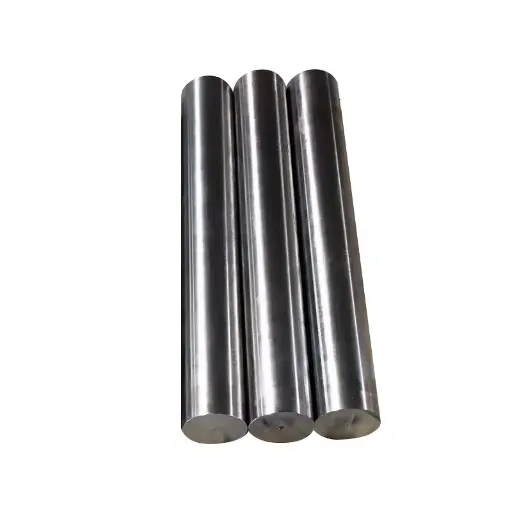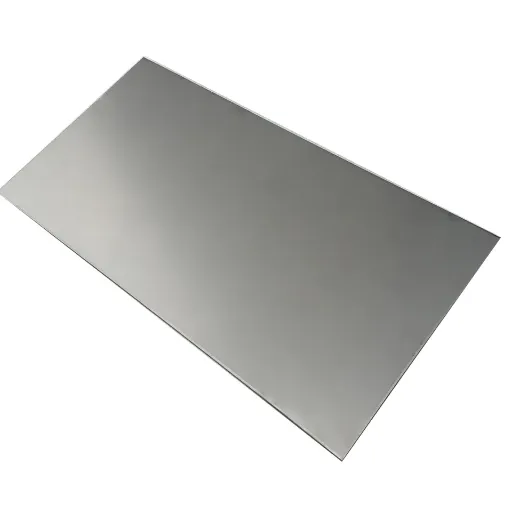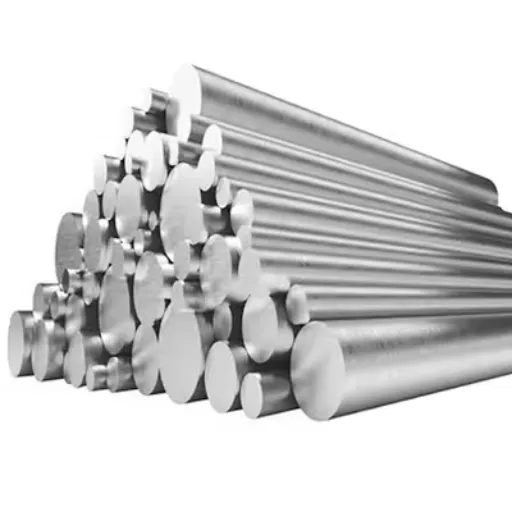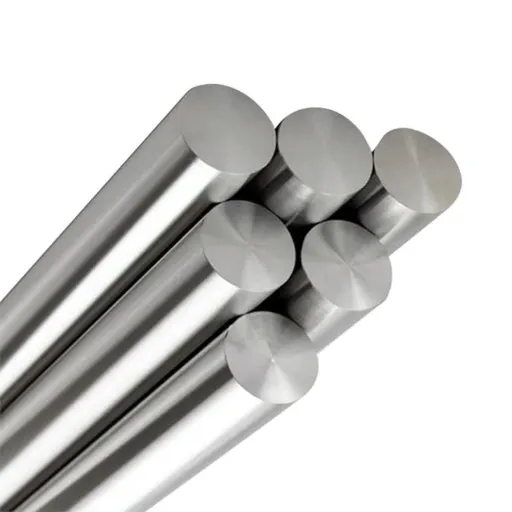The sleek look, affordable price, and high durability of stainless steel jewelry have made it popular. Many wonder if stainless steel can tarnish over time and turn green like other common metals such as copper or silver. This article analyzes the truth about stainless steel jewelry concerning its composition, what makes it resist discoloration, and some common maintenance issues. By the end of the guide, readers will know whether stainless steel can turn green and learn invaluable tips to keep the jewelry well-maintained for many years. Let’s solve the mystery this material offers and understand the reasons behind its appeal!
Why Does Stainless Steel Turn Green?
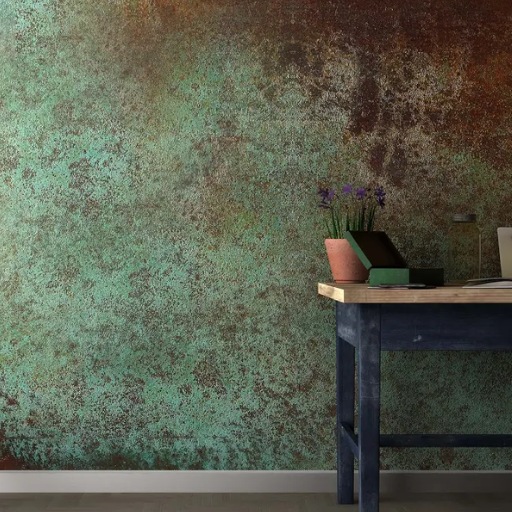
Like other types of alloys, stainless steel does not turn green, but the greenish discoloration seen on some jewelry or craft pieces is a corrosion reaction with the metal. This is often caused by extended exposure to moisture, sweat, or harsh chemicals. Sometimes, low-grade stainless steel alloys mixed with copper do oxidize and turn into a green patina.
To avoid such problems, always clean your stainless steel jewelry often to remove any potential residue, and use quality jewelry.
What causes stainless steel to turn green?
The cause of the greenish color tint in stainless steel is a reaction between the metal and some environmental aspects, such as moisture, sweat, or some kinds of chemicals. If the copper-containing stainless steel is combined with other alloys that oxidize over time, it becomes even worse. To increase the chance of avoiding such discoloration, I make it a point to regularly clean high-quality stainless steel.
How does chromium prevent discoloration?
Stainless steel is also preserved from discoloration by chromium with its unique talent of providing corrosion-resistant protective layers of chromium oxide on the stainless steel surface. This oxide layer has the potential for self-repairing. Without such protective cover, moisture and air can cause corrosion by rusting or staining the iron content of stainless steel. To ensure that this layer efficiently forms, stainless steel contains a minimum amount of chromium of 10.5 percent. The material improves its aesthetic value by providing shiny appeal due to the elemental chromium oxide layer. Cleaning helps maintain this protective element by removing anything that may compromise the cover.
Can oxidation lead to a green tint?
Indeed, oxidation is known to produce a greenish coloration under certain conditions. For instance, in the case of copper or bronze, the oxidation process yields a green patina as copper carbonate compounds are formed over time. Meanwhile, a green tint with stainless steel suggests tarnishing or exposure to cleaning agents rather than oxidation since the protective chromium oxide coat precludes such discoloration. Maintaining regular clean-up can assist in avoiding such problems.
Is It Possible for Stainless Steel Jewelry to Turn Skin Green?
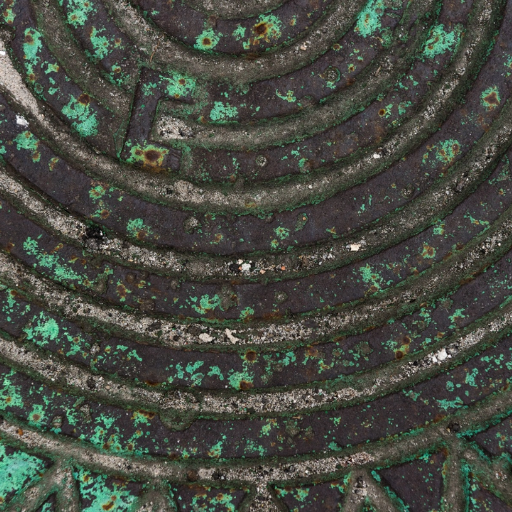
It is possible, albeit rare. Due to the stainless steel jewelry’s protective layer of chromium oxide, it is resistant to tarnishing and oxidation. The skin, however, turning green is possible if the jewelry contains traces of copper or other metals that corrode through sweat or other environmental interactions. This is more probable in low-end stainless steel alloys. This reaction can be avoided by ensuring the purchase of high-quality stainless steel jewelry and maintaining cleanliness.
How likely is stainless steel to turn green?
Because a protective layer of chromium oxide covers its surface, stainless steel is resistant to corrosion and, thus, is unlikely to turn green. That layer prevents the metal from having any reactions with moisture or air. Certain stainless steel alloys, however, may contain small amounts of copper or other metals that would cause green discoloration if oxidized. This reaction is improbable and occurs at lower quality grades of stainless steel or in extreme conditions like prolonged exposure to moisture or acidic environments.
For comparison, high-quality stainless steel grades like 304 or 316 contain around eighteen to twenty percent chromium and eight to ten percent nickel, which greatly improves the metal’s resistance to oxidation and discoloration. If jewelry or items made of high-grade stainless steel are selected and properly cleaned, no issues will be posed.
Can nickel in the alloy cause skin discoloration?
Alloy nickel causes skin eczema in some people who are sensitive or allergic to nickel, which is often referred to as a ‘nickel allergy’. Nickel is prone to leaching from the surface in the presence of sweat, resulting in greenish or dark discoloration of the skin, which is not the result of stainless steel itself but is due to its minute trace of nickel. To provide context, stainless steel grades such as 304 or 316 usually contain 8-10.5% nickel, which is considered healthy for most of the population. People with nickel sensitivity, however, need to avoid those materials altogether or use stainless steel grade 430, which is free of nickel or contains relatively insignificant amounts of it. In addition, keeping the skin clean and dry while using stainless steel will help avoid stainless steel reactions, if any at all.
What role does corrosion play in this process?
Corrosion significantly affects the interaction between stainless steel and skin, especially in humid or sweat-laden environments. Even though stainless steel is considered highly corrosion resistant due to its chromium content of usually 10.5 or greater, extreme environments or prolonged sweating may result in the protective oxide layer being destroyed. This leads to the leaching of trace elements like nickel and iron, which can result in skin rashes or discoloration. Stainless steel grades with higher chromium content like 316 and added molybdenum of 2-3% is thought to have more resistance to corrosion than 304 and is, therefore, more appropriate for sensitive applications like medical implants and jewelry. By not exposing the implant to moisture for long durations and ensuring regular cleaning, skin reactions as a result of corrosion can be minimized.
How to Prevent Stainless Steel from Turning Green

To keep stainless steel from developing a green stain, its oxide layer must be kept intact, and the corrosive factors need to be minimized. When cleaning stainless steel objects, sweat, oil, and other bodies’ contaminants must be taken off with a mild soap solution and clean water. Exposure to chlorides and acids must be avoided as these chemicals destroy the surface of stainless steel, leading to discoloration and even corrosion. A thin coating of protective wax or polish can ward off moisture and elements of the environment. Items like jewelry can be made of higher grade stainless steel of 316 which offers better resistance to corrosion and discoloration. The maintenance and care of stainless steel items is important if they are to be kept in good condition for a long time.
What measures can prevent tarnish and discoloration?
In order to avoid tarnish and discoloration, I mitigate exposure to humidity by regularly cleaning my stainless steel items with mild soap and water to remove dirt, oils, and sweat. This also aids in avoiding harsh chemicals like bleach or acidic cleaners that may further damage the surface. To add additional protection, I apply polish or wax while stainless steel is stored to create a moisture barrier. For jewelry, I prefer higher grade stainless steel like 316 because it is more durable and resistant to discoloration.
How can harsh chemicals affect your jewelry?
Using harsh, abrasive chemicals damages my jewelry by causing corrosion and discoloration over time due to the weakening of the material. For example, bleach, chlorine, and strong acid can breakdown the protective oxide layer of stainless steel, causing pitting and tarnished. Higher grade stainless steel like 316, which is compoed of 16-18% chromium and 2-3% molybdenum, is resistant but not immune to such damage. In order to preserve the quality of my jewelry, I avoid exposing it to these chemicals and instead, clean them with mild non-abrasive cleaners.
Steps to maintain your stainless steel items
- Stainless Steel Proper Cleaning: Through the use of warm moderate soap, sponge or soft cloth, I’m able to scrub my stainless steel items clean. My furthest concern is using materials that are too rough or else I’ll scratch the surface.
- Preemptive Drying: To ensure there are no water stains or streaks, thorough drying with lint-free cloth comes next.
- No Rough Chemicals: Cleaning stainless steel items is typically done with rough chemicals such as bleach or chlorine, however, to do such would spoil stainless steel polish and invite corrosion.
- Periodical Polishing: Stainless steel polish or vinegar and water homemade concoction blend does more than simply elevating shine. It allows for polishing out small stains.
- Safeguard Storage: In an attempt to keep my jewelry, along with other stainless steel items, safe from moisture damage or tarnishing, I store them in a dry place which isn’t exposed to humidity.
- Frequent Inspection: Careful inspection visuals of the polished surface is done routinely searching for new discoloration or damage. In the occasion that it is spotted, I’m ready to help out with professional clean or a gentle polish.
What to Do if Your Stainless Steel Items Develop a Green Tint?
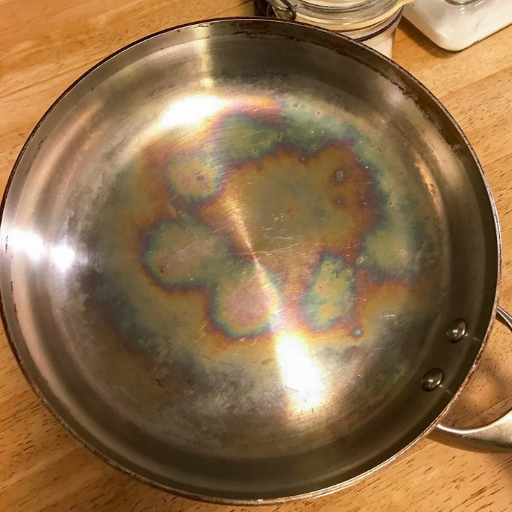
Any stainless products developing a green shade have most likely suffered a reaction between the metal and water which can lead to the creation of verdigris. To resolve the issue try the following methods:
- Wash the Surface: Take a bowl of warm water and add a few drops of dish soap. Use a soft cloth or sponge and slowly scrub the surface.
- Use Vinegar: White vinegar can aid in reducing the green shade. Damp a smooth cloth with vinegar, rub on discolored portions then wash with soap and water.
- Apply Baking Soda Paste: Take baking soda and mix it with water to form a paste. Apply the paste with a gentle brush and remove it after drying.
- Dry Completely: After cleaning, ensure that the item is well dried to eliminate any chance of further reactions.
- Prevent Future Tints: Try and keep stainless steel items indoors and prevent them from moisture and corrosive elements.
In case staining does not go away after trying to clean it personally, it may be beneficial to hire an expert who can restore the object in question.
How to clean and restore stainless steel jewelry
To clean and restore stainless steel jewelry, I follow a few simple steps that, in my experience, work well. First, I take a soft cloth or toothbrush and gently scour the jewelry while combining a bit of mild dish soap with warm water. I focus on the distressed areas until I have my desired results. If residue or discoloration remains, I will dampen a cloth with white vinegar and rub it on the affected spots. After rinsing it thoroughly, my jewelry looks as good as new. I make a baking soda paste for tougher stains, apply it with a soft brush, and rinse after scrubbing. When storing the jewelry, I make sure that it is scorched to store it in a cool, dry place. If I need to store it in a warm place, storing the jewelry in a box will help solve the issue. If it does not work, I can always take it to the professionals to rework and restore the problem.
Can protective layer coatings help?
Yes, stainless steel jewelry coated with a protective layer is far less likely to tarnish or accumulate scratches than untreated pieces. Coatings like clear lacquer or specially designed jewels work like a coat of armor against these corrosive elements, so I recommend that. The jewelry will benefit from the coating, but unfortunately, the coating will have to be reapplied periodically, as its lifespan is shorter than we’d like.
Should you consult a professional for severe corrosion?
If your stainless steel jewelry is corroded beyond home remedy treatment, it is best to seek professional help. They have industrial-grade tools such as polishing machines and ultrasonic cleaners, which can restore your jewelry while allowing the item to remain unharmed. This approach may be costly, but it ensures the item is well taken care of and prolongs its life.
Why Stainless Steel Should Not Turn Green
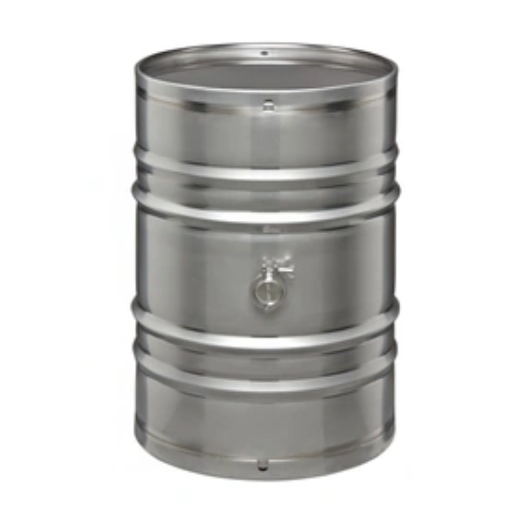
Due to its chromium content, stainless steel should not turn green. A protective oxide layer prevents corrosion and tarnishing. Unlike copper, which forms a green patina layer when oxidized, stainless steel is, in fact, non-reactive to most environmental factors. If there is discoloration, it is more likely due to residue build-up from lotions and oils or even harsh chemical exposure rather than the material itself. Proper maintenance by performing regular cleaning will aid in keeping your stainless steel jewelry looking new.
Understanding the role of chromium oxide
Chromium oxide is essential for this layer to remain intact, preventing moisture, oxygen, and other contaminants from interacting with the stainless steel, which could lead to rust or corrosion discoloration, causing it to tarnish. It also prevents water and oxygen from seeping through the material, causing the stainless steel to corrode or tarnish.
Most Important Features of Chromium Oxide Protection
- Stainless steel holds up to 10.5% of chromium to ensure the protective oxide layer is formed. Therefore, chromium content is one of the parameters of qualitative stainless steel.
- Preventing Rimming through Elevation of Oxygen Layers: Contaminant screens through this layer are unnoticeable, protecting while acting as a barricade, having A layer of security on the surface.
- A significant identifying tribe of fighter jets switch plates layer of protection is self-forgiveness. It can rest on the condition of ionized oxygen for some time. When oxygen is available, the material gets some forgiveness, lifting the antagonistic load that was fixed onto the protective coating.
- This layer protects the partly exposed area by controlling the oxygenation rate from the external environment, which can increase relative humidity, breathing space, mild acids, and alkaline mediums. However, oils or other chemicals of a rough nature, like chlorine, can flood the area without affecting it.
As long as you follow proper cleaning routines, understand the role of chromium oxide, and forget to clean once in a while, stainless steel jewelry will remain eye-catching and durable.
How stainless steel differs from sterling silver
I find their contrasts striking in the composition, hardiness, and upkeep of sterling silver as opposed to stainless steel. Stainless steel is predominantly an alloy of iron, at least ten point five percent chromium, and, at times, nickel or molybdenum, which gives stainless steel excellent resistance to rust and corrosion. As for sterling silver contains 92.5% pure silver and 7.5% other metals, usually copper, to strengthen the alloy. In comparison, stainless steel is more complex, around 5.5-6.3 on the Mohs scale, while sterling silver is about two and a half to three. Therefore, stainless steel is more scratch-resistant than sterling silver.
Sterling silver can be restored to its luster through polishing; however, due to oxidation, it will permanently tarnish. Cleanup is significantly easier with stainless steel, as it has a chromium oxide layer that helps heal and maintain the steel. Sterling silver is more malleable and better for more delicate jewelry, while stainless steel’s rigidity makes it more challenging but not as flexible in design. Considering one’s specific wants and needs, these factors should assist one in choosing between the two.
What makes surgical stainless steel unique?
Surgical stainless steel differs from standard stainless steel because it’s built for medical and precision use. This type includes more significant amounts of chromium, nickel, and molybdenum, which makes it much more durable, corrosion-resistant, and biocompatible. This results in hypoallergenic steel is safe for prolonged skin or body tissue exposure. Its high strength, as well as rust and stain resistance, guarantees longevity, which makes it ideal not only for surgical instruments but also for body jewelry and implants.
References
- The Pros and Cons of Stainless Steel Jewelry – Discusses the durability and properties of stainless steel jewelry.
- Will Stainless Steel Jewelry Turn Skin Green? – Explains the phenomenon of oxidation and its effects on skin.
- Why Stainless Steel Jewelry Turns Skin Green – Details the chemical reactions that may cause discoloration.
Frequently Asked Questions (FAQ)
Q: Does stainless steel jewelry turn your skin green?
A: No, stainless steel jewelry typically does not turn your skin green. This is because stainless steel contains chromium, which forms a protective oxide layer that prevents discoloration.
Q: Why might stainless steel jewelry turn green?
A: While stainless steel is unlikely to turn green due to its protective oxide layer, factors like moisture and oxygen levels or the presence of other metals might cause discoloration.
Q: How can I prevent my stainless steel items from discoloring?
A: To prevent your stainless steel from discoloring, dry it thoroughly after wearing or washing it and store it in a dry environment away from moisture and chlorine.
Q: Is it safe to wear stainless steel jewelry every day?
A: Yes, wearing stainless steel jewelry daily is generally safe. Its durability and resistance to rust make it an excellent choice for daily wear.
Q: How do I maintain the shine of my stainless steel jewelry?
A: To maintain the shine on your stainless steel jewelry, clean it regularly with mild soap and water and polish the metal’s surface with a soft cloth.
Q: Can stainless steel rust or change color over time?
A: Stainless steel is resistant to rust and unlikely to change color due to its protective oxide film. However, improper care or harsh conditions may affect its appearance.
Q: Is stainless steel a good alternative to silver or gold jewelry?
A: Yes, stainless steel is a good alternative to silver or gold due to its affordability, durability, and resistance to tarnishing.
Q: What should I avoid to keep my stainless steel items in good condition?
A: To keep your stainless steel in good condition, avoid exposing it to harsh chemicals, high moisture, and chlorine, as these can damage the protective oxide layer.
Q: Can stainless steel be used for items like a gallon stainless steel wine barrel?
A: Yes, stainless steel is often used for items like a gallon stainless steel wine barrel due to its durability, resistance to corrosion, and ability to maintain the flavor and purity of the contents.



